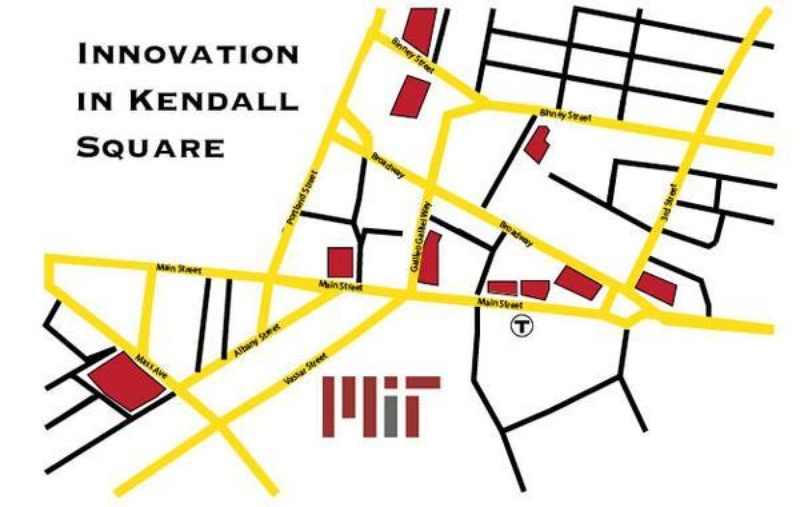UPDATED: Dec. 18, 2012, at 8:08 p.m.
When Apple co-founder Steve Jobs died last year, Cantabrigians gathered on Main Street in Kendall Square to mourn the passing of a tech industry god.
They stood near Jobs’ plaque on the Entrepreneurial Walk of Fame, where they laid flowers on the star bearing his name. The Entrepreneurial Walk of Fame had opened that year to honor and celebrate big names in business, and Kendall now seemed a place to go to honor an innovator.
“We want to be the head of innovation and entrepreneurship—what Wall Street has for finance and what Hollywood has for celebrities,” said Travis McCready, executive director of the Kendall Square Association, a board of community stakeholders.
Since its bygone days as a home to manufacturing factories, Kendall Square has become a magnet for the global information technology, biotechnology, and pharmaceutical industries, drawing companies like Google, Microsoft, and Pfizer. Also home to the Massachusetts Institute of Technology, it has been called the most innovative square mile on Earth by the Boston Consulting Group.
Once a post-industrial wasteland, the now-vibrant Kendall area could provide a model for Harvard as it reboots plans to transform the underdeveloped Allston neighborhood just across the Charles River into the University’s research hub.
WASTELAND TO WONDERLAND
Fifty years ago, Kendall Square—today a key driver of Cambridge’s economy—was empty.
Manufacturing companies had moved out to make room for NASA’s new Electronic Research Center, which was expected to reinvigorate Kendall Square, according to Charles M. Sullivan of the Cambridge Historical Commission.
But President Lyndon B. Johnson thwarted this dream of revival, deciding instead to locate NASA’s new facilities in his home state of Texas.
The ensuing decades were sleepy ones for Kendall. But the construction of several office buildings in the 1990s at last triggered an explosion of development that has continued to this day.
Jeff Lockwood, the global head of communications at Novartis, explained the pharmaceutical company’s decision to open a new global headquarters for research operations there: “We wanted to come and grow in Cambridge. This is where science is today and where science is going to be tomorrow.”
Google followed in Novartis’s footsteps, arriving in Kendall Square in 2006.
These large companies attracted new start-ups, like GnuBIO, a DNA sequencing company co-founded by Harvard physics professor David A. Weitz in 2009.
“It’s the DNA of the Square, the aura. There’s so much going on,” Weitz said, explaining Kendall’s thriving innovation community.
Read more in News
For Creative Concentrators, A New Happily Ever After













